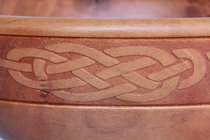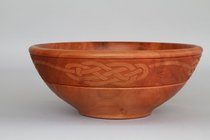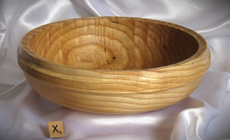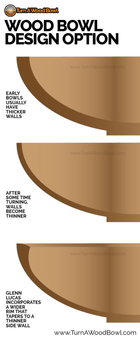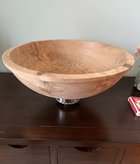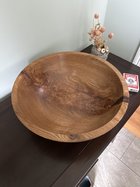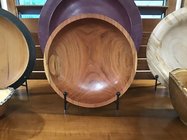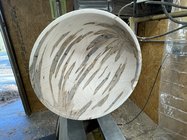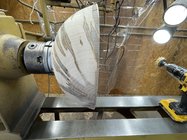I’m a little disappointed that it’s looking pretty basic. I’ll need to think about how I can give it more interest.
To me the rim is a detail that you see the most.
It’s your bowl so do the rim the way you like it.
If you are disappointed in the look it may be the rim or it could be something else.
I leave the rim thicker and taper the wall thickness toward the bottom.
Looks better to the eye and makes the bowl feel better in the hand and feel lighter.
In my bowls I do mostly two rim styles.
1. A bead at the top. the inside curve rolls over into a bead. Then I often put a little frieze type embellishment under the bead.
The outside curve flows all the way to the rim it is interrupted by the grooves around the beads.
2. Curved rim, I like the outside curve to go all the way to the rim. Then I curve the rim up to the inside wall
No flats 3 curves. Inside curve, rim curve, outside curve…
The upward curving rim will be visible when the bowl is full of stuff.
Curved rim (cherry bowl has beads way below the rim)
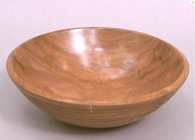
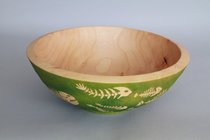
Beaded rim
